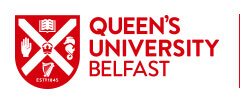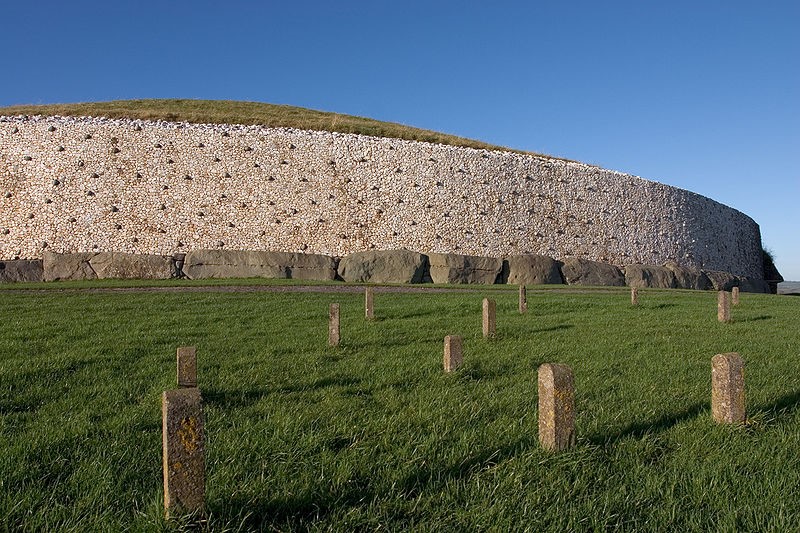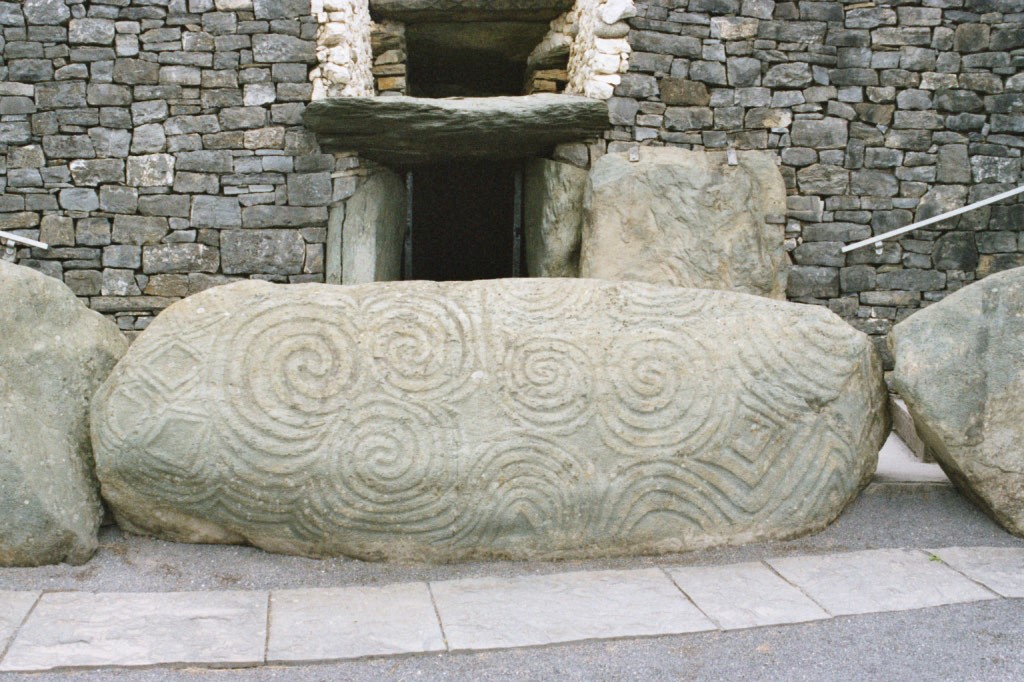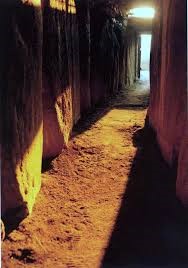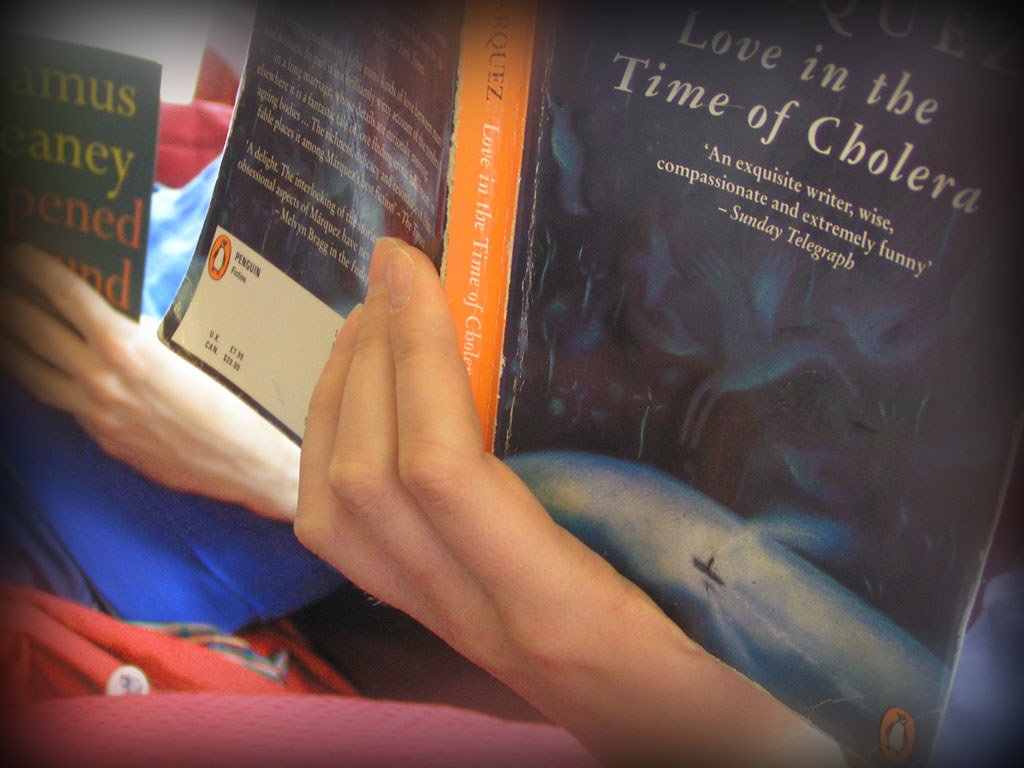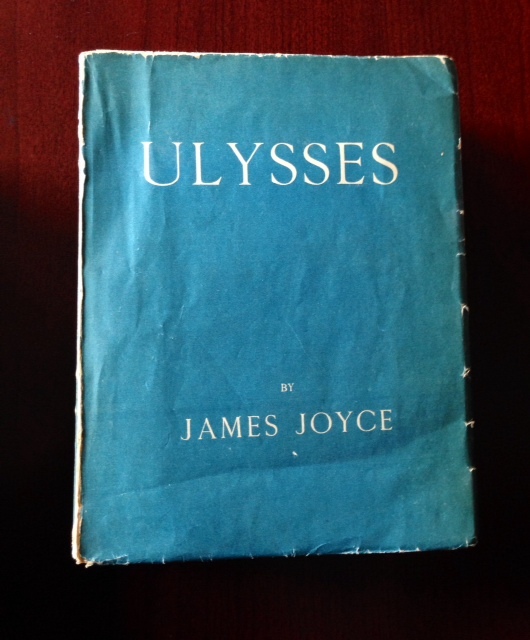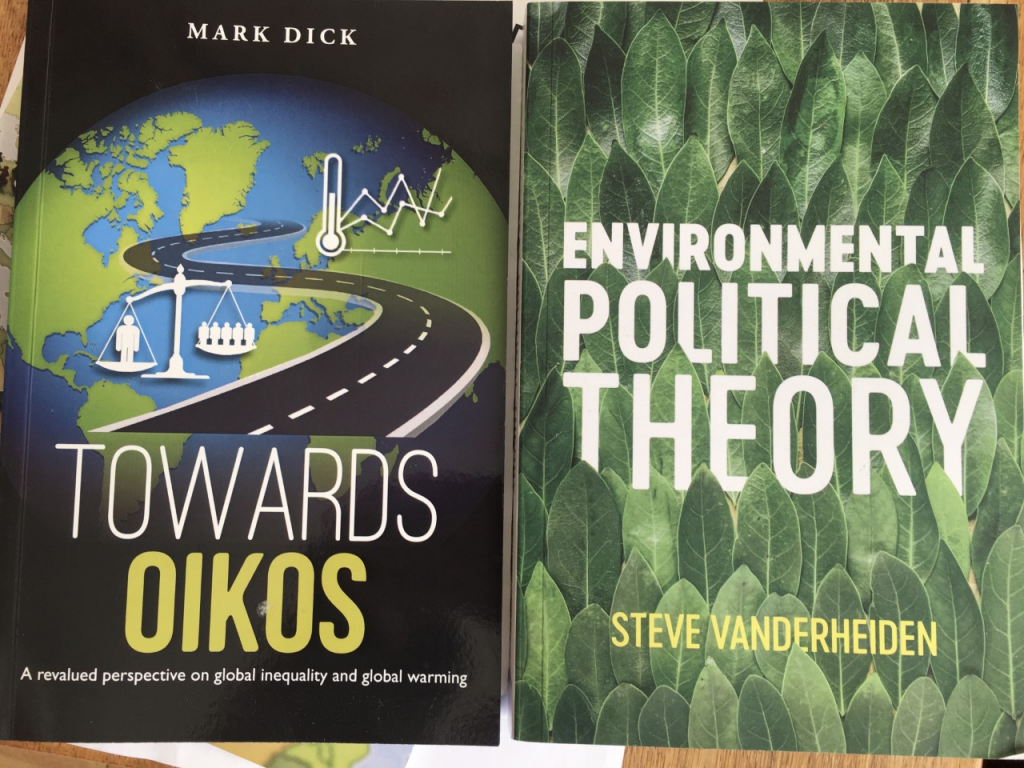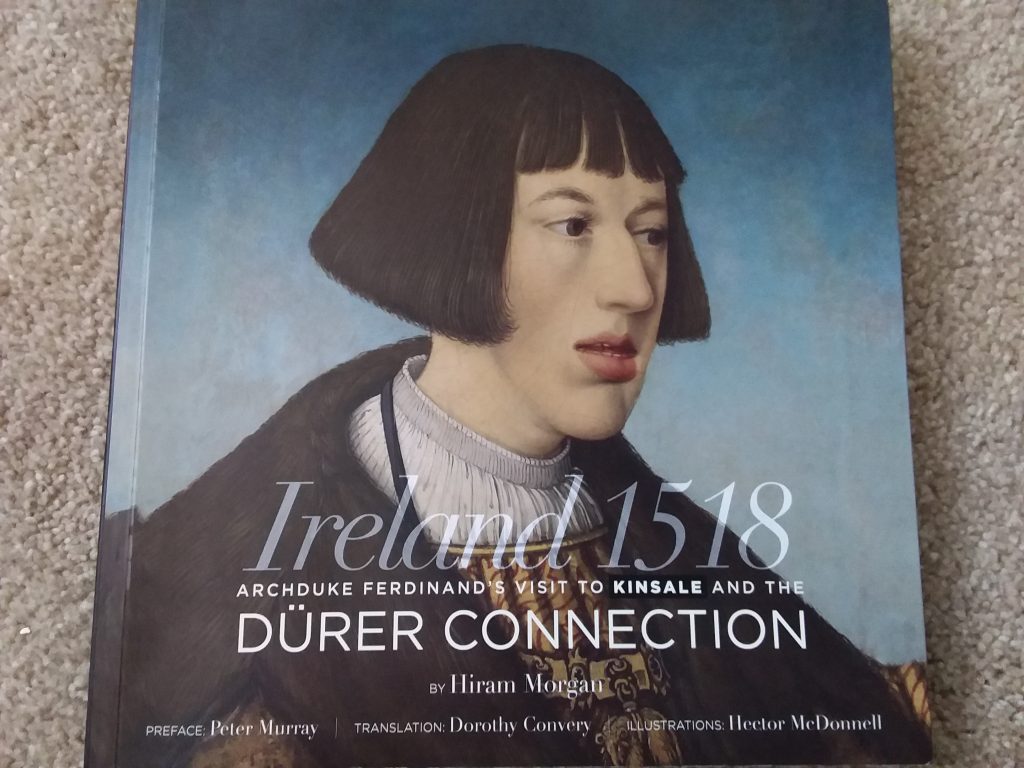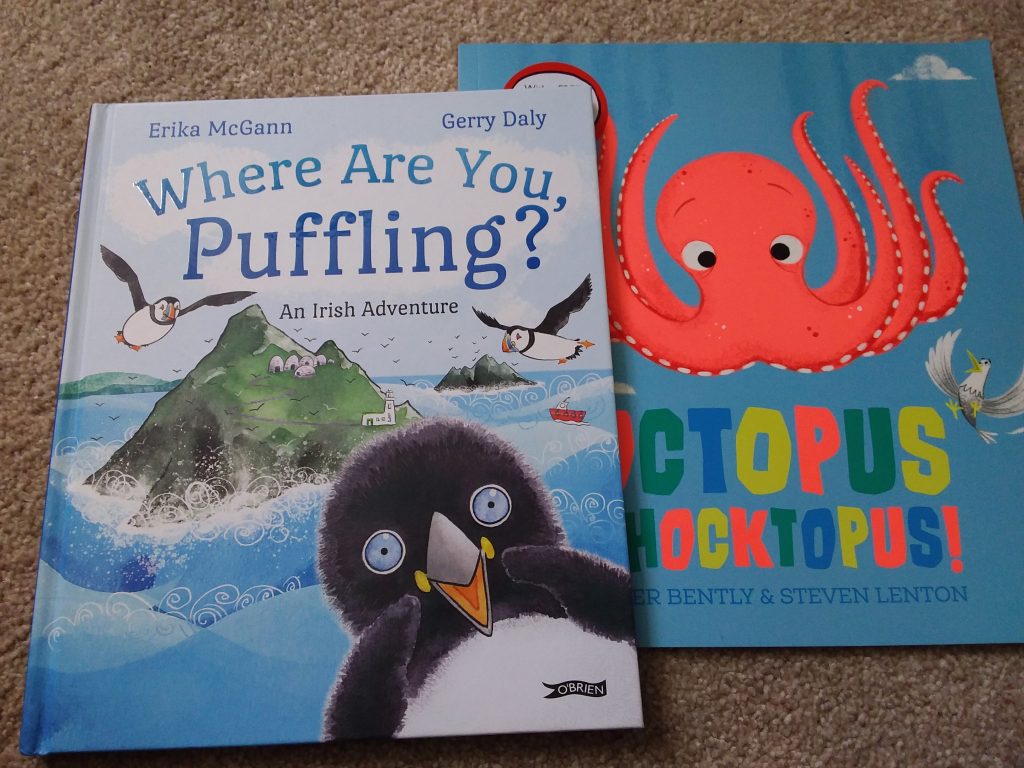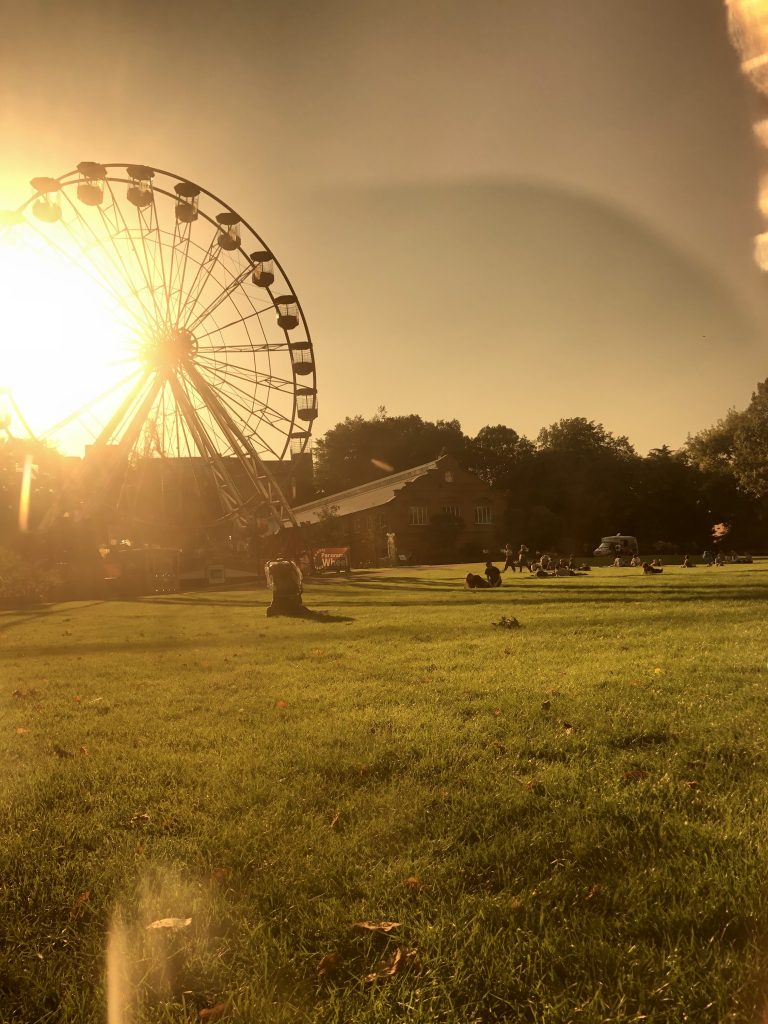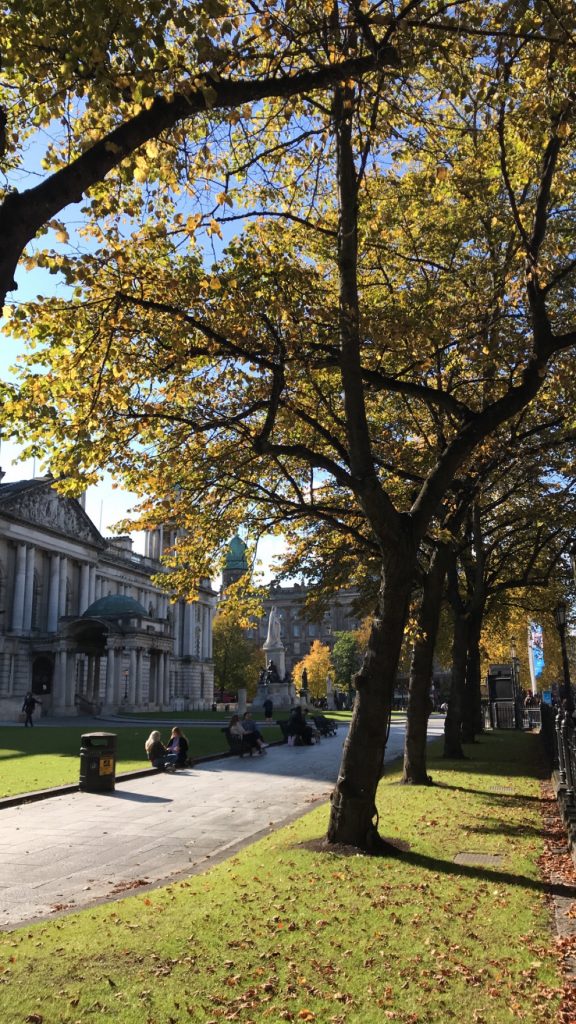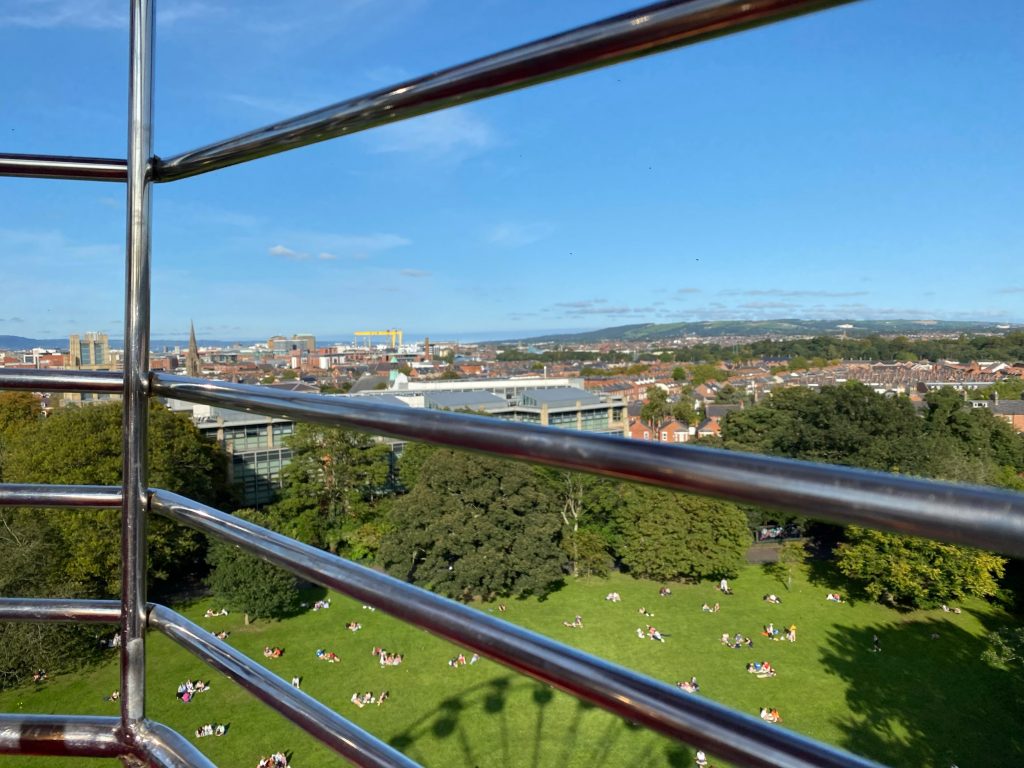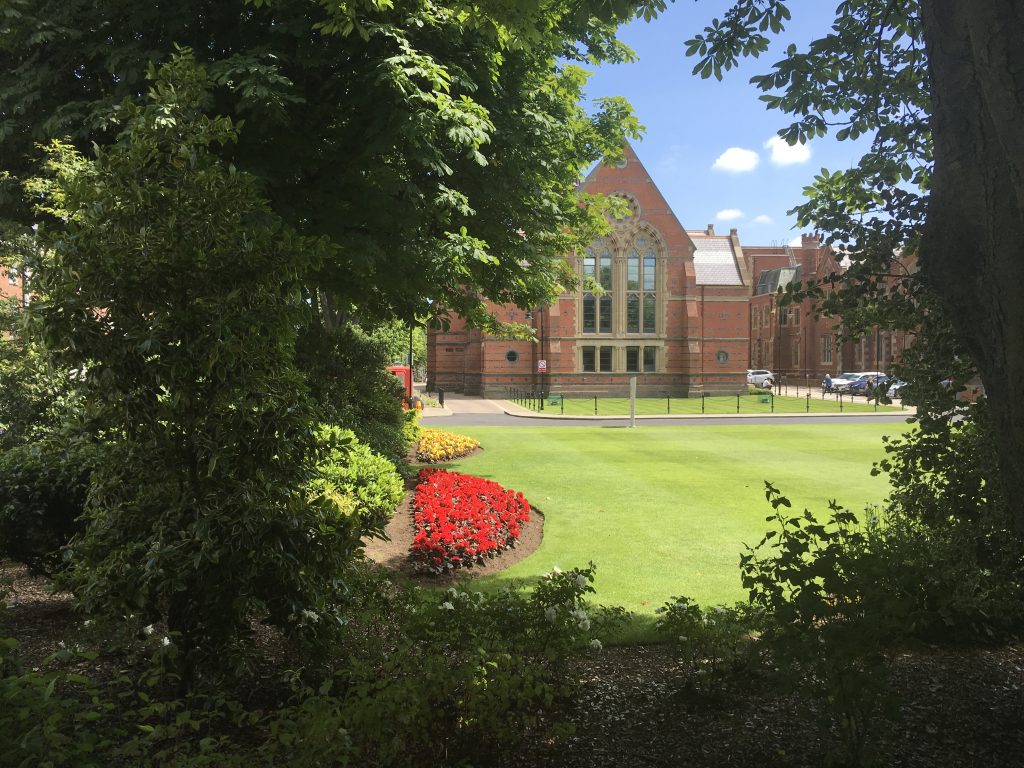We are delighted to announce the winners of our Staff and Student Lockdown fashion competition, Ella Jepson (student category) and Susan Templeton (staff category). Take a look at the winners and honourable mentions below!
WINNER: STUDENT CATEGORY
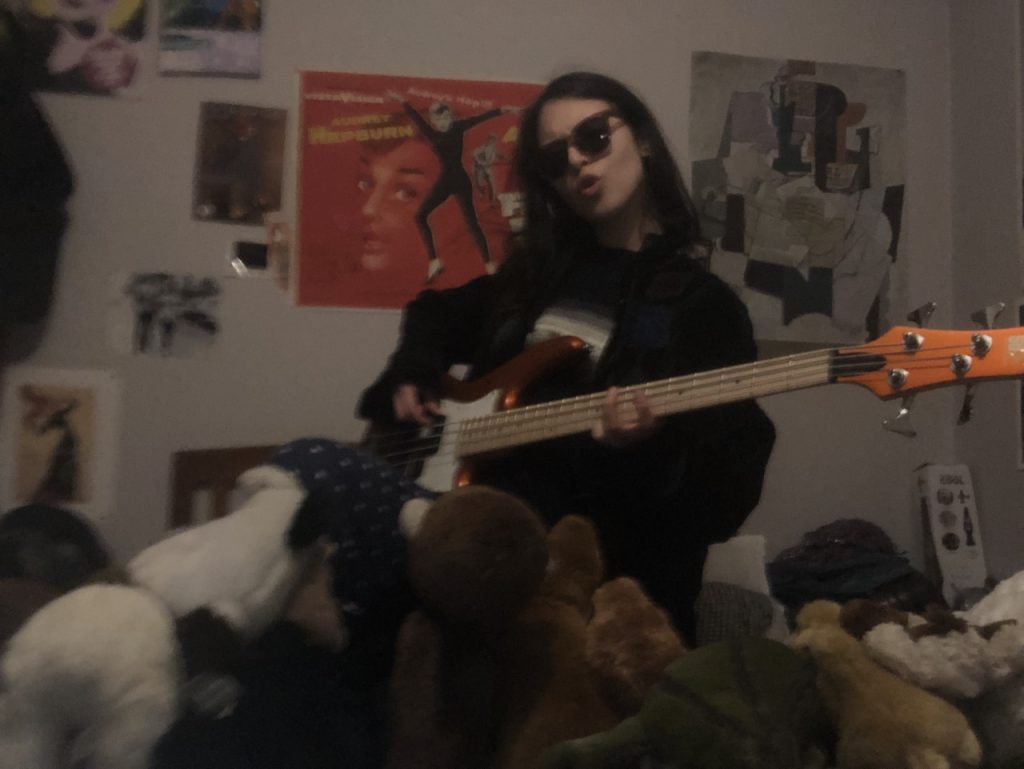
WINNER: STAFF CATEGORY
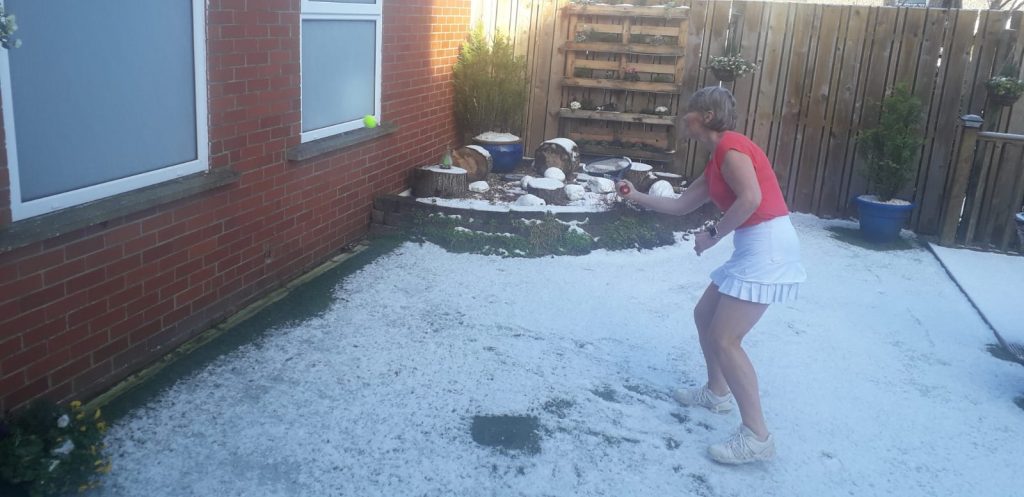
See below our honourable mentions in staff and student categories – thank you to everyone who participated!
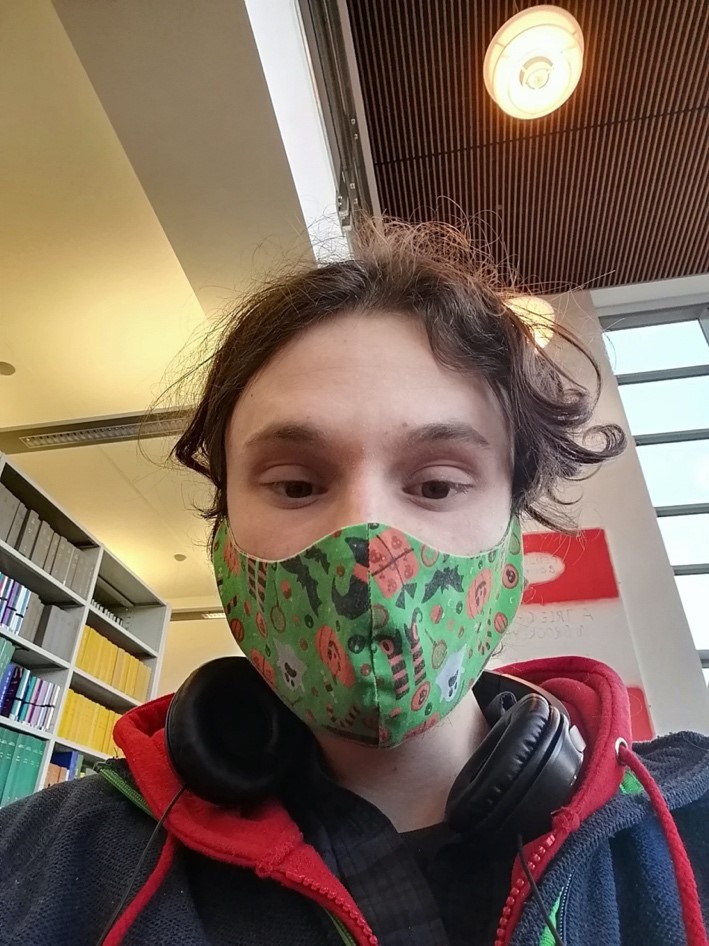
George: Here’s me—as you can see—in the famous McClay Library with a rather outdated Halloween mask not in keeping with the times. I’ve got a sentimental attachment for this mask, and it hasn’t been able to rid itself of me. This is partly for two reasons: one being that it’s the second mask that I’ve owned for a substantial amount of time, the second reason being that my mother (who has an impressive collection of masks) kindly donated it to me after Halloween out of her frustration with me using those disposable one’s. Thanks, Mum!
If you see me trundling around McClay (which is where I spend most of my time) I hope it brings you a smile, because it does to me too. If it’s being cleaned or drying, I’ll be wearing my Christmas one-potentially inside-out admittedly, out of non-Christmassy induced sheepishness. (That’s the real beauty of this one, it doesn’t have that inside-out button!)

Maruska: I took this photograph in the early summer of 2020, when, like many others in Northern Ireland, I decided to start a new hobby to deal with the challenges of the pandemic. Sea swimming is a great way to gain a sense of freedom at a time of restrictions and lockdown. The only problem is getting in and out of the wetsuit! In this picture I tried it on for the first time – the label is still attached to it.
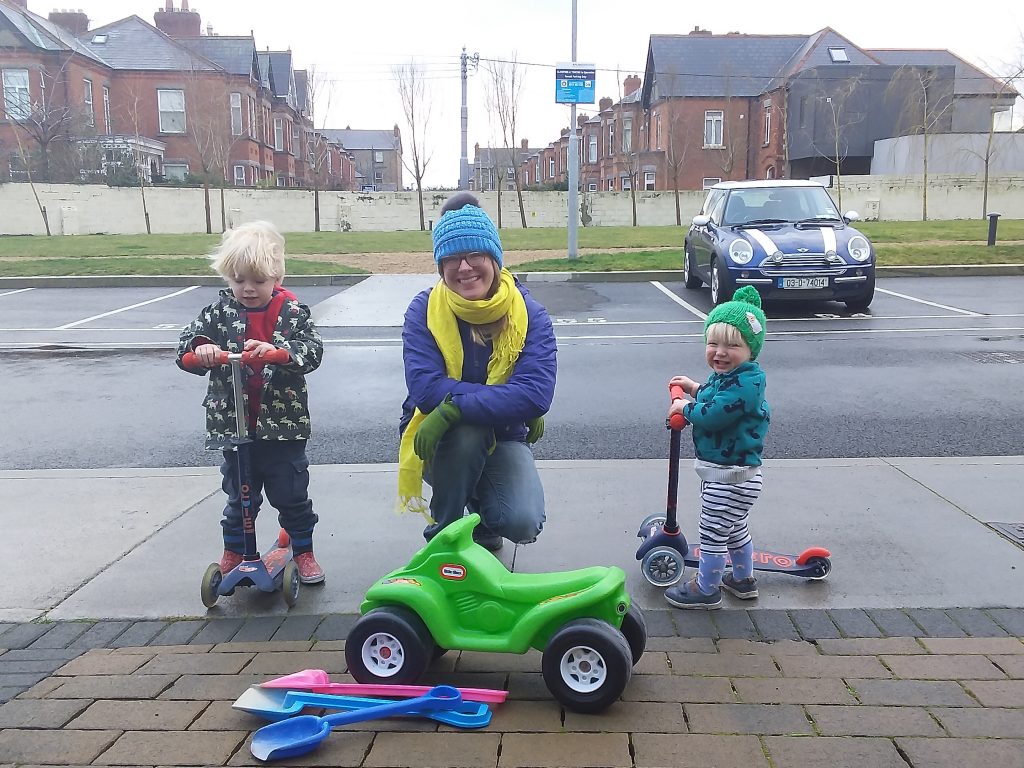
Sparky: For me lockdown fashion has been all about being warm. Nothing matches on anyone but we need all the layers we can get!

Tricia: Dressed up like a teddy Bear
To hide away my unwashed hair
So cosy and warm I will indulge
To cover up my lockdown bulge!
For my expanding stomach is due no less
To the numerous buns I did digest
Working nonstop in front of my PC
Has had this effect on me –
and I drank too much tea!
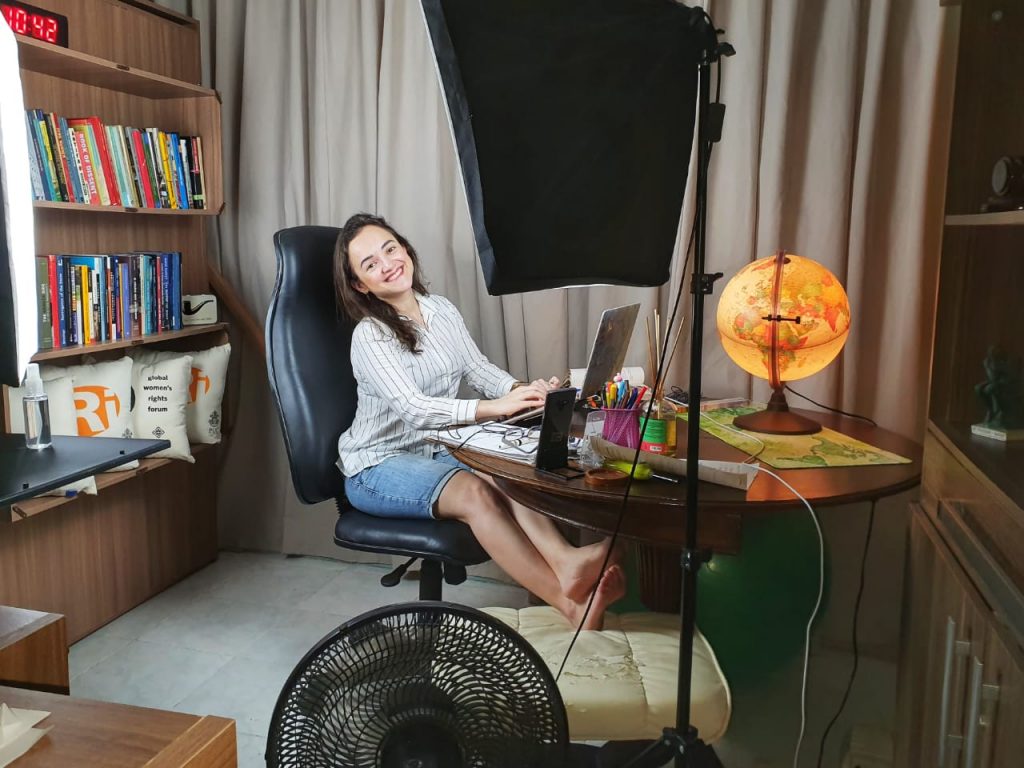
Francine: My lockdown fashion is “half dressed-up” now that classes started. I was meeting students this morning for their first tutorials.
